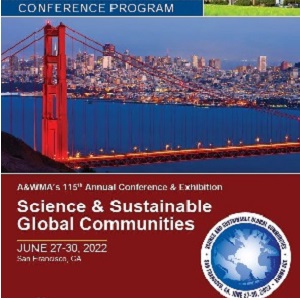Back
Student Poster
Air Measurements, Monitoring, and Controls (AA)
Session : Technical and Student Poster Session
1166654 - Aerosol Absorption Measurements and Their Relation to Air Quality and Climate Change (Student Poster #12)
Tuesday, June 28, 2022
10:45am – 12:15pm PT
Location: Exhibit Hall
- CD
Charlotte R. Dungan
Graduate Research Assistant
New Mexico Insitiute of Mining and Technology
Socorro, NM
Primary Author(s)
Aerosols’ effect on climate is currently the single largest physical process uncertainty in climate forcing studies. Carbonaceous aerosols, including absorbing and non-absorbing components, can enhance or mask greenhouse gas warming and are subject to significant uncertainties. This work will provide key parameters needed in global climate models to accurately represent the effects of light absorbing aerosols. This research has two main goals: (1) validate two filter-based absorption instruments compared to in-situ instruments and (2) study biomass smoke properties related to climate forcing. Light absorbing aerosols are divided into two main categories: black (BC) and brown carbon (BrC); both are strongly linked to biomass burning. BC is soot-like absorbing with a reciprocal wavelength dependence while BrC absorbs more strongly at blue wavelengths, giving it a brownish appearance. Filter-based instruments dominate aerosol sampling due to their accessibility, but less work has been done on validating filter-based to in-situ instruments. Filter-based instruments have non-idealities due to the filter itself. In-situ instruments avoid these biases because they measure the aerosol in situ, either directly or by difference. Two filter-based instruments (Tricolor Absorption Photometer and MA200 Aethalometer) are being intercompared to each other and against in-situ instruments. Biomass fuels include a range of native and invasive southwestern US plant samples harvested in central and northern New Mexico. Combustion experiments, using controlled temperature conditions in a tube furnace, include pyrolysis, flaming, and smoldering conditions. Smoke aerosol properties include particle size, absorption wavelength dependence, and the brightness of the aerosol (quantified by the single scattering albedo, SSA) are strongly linked to both combustion temperature and efficiency. Filter-based instruments over-measure the absorption coefficient compared to in-situ instruments, a result of filter non-idealialities. Temperatures < 600C produce smoldering conditions with large BrC production and SSAs of 1.0. Temperatures > 800C drive high BC formation, and SSA < 0.60.

.jpg)
